IS conflict: Battle for Mosul on schedule, but not exactly to plan
- Published
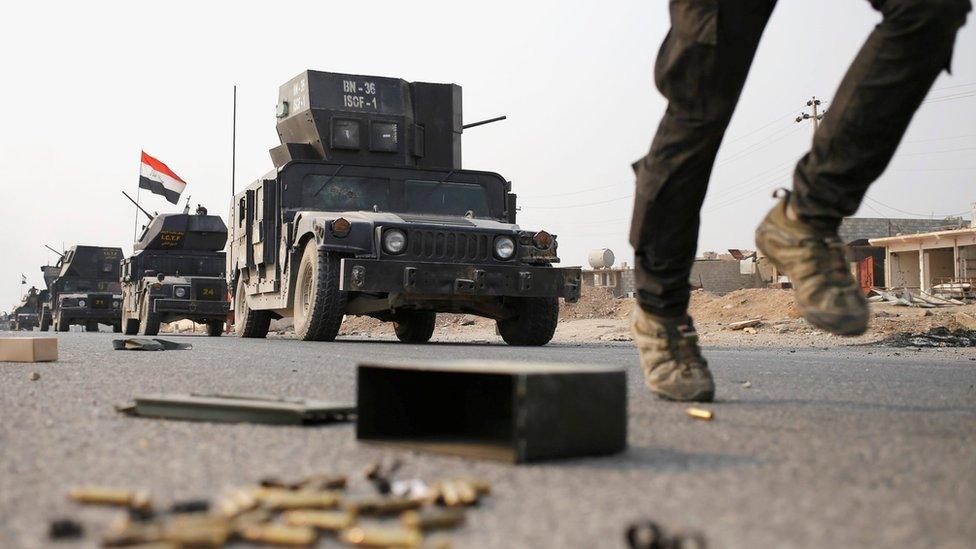
Elite Counter-Terrorism Service troops are leading the advance into eastern Mosul
On Day 16 of the offensive to retake Mosul from Islamic State (IS) militants, the Iraqi Security Forces (ISF) reached the eastern edges of the city at two points.
Counter-Terrorism Service (CTS) special forces began to penetrate the industrial districts of Kukjali and Karama, home to mechanics' workshops and working-class homes.
Iraqi Army's ninth division forces closed on the outer edge of Mosul, about 3.5km (2 miles) further to the south, entering via Judaydat al-Mufti, one of the newer residential areas built for Saddam Hussein-era soldiers and civil servants.
Multi-front offensive
As expected, the Mosul offensive initially saw simultaneous advances on a number of axes, with the ISF leading the fight on three of them.

One Federal Police-led column drove up the Baghdad-Mosul motorway, west of the River Tigris, covering almost 40km (25 miles) in the first two weeks.
They are currently 15km (9 miles) away from the city.
Another column made up of the Iraqi Army's 15th division fought up along the western bank of the Tigris, encountering stiff resistance, including the deliberate burning by IS of sulphur deposits at al-Mishraq, creating a huge toxic cloud over the battlefield.
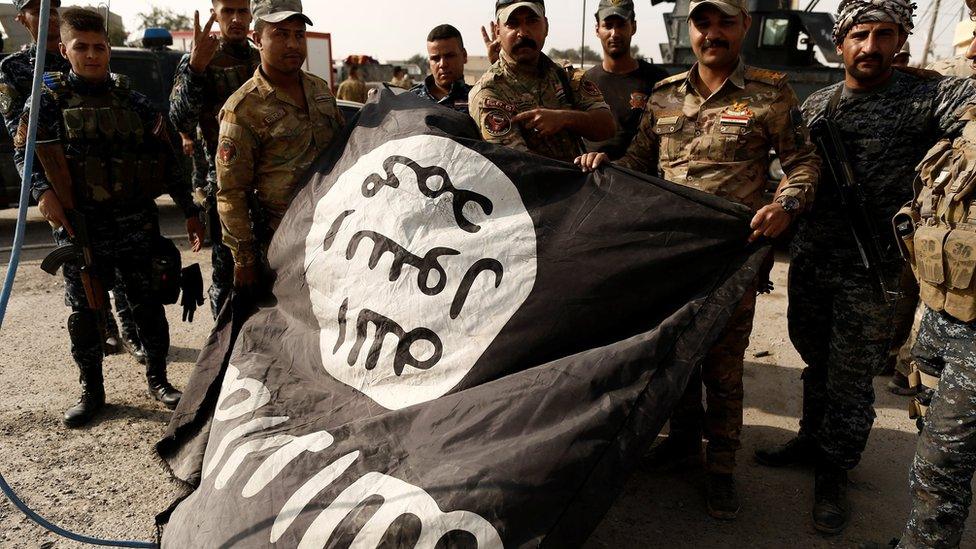
Iraqi troops drove IS militants from the town of Shura, south of Mosul, on Saturday
The 15th division remains stuck clearing out pockets of enemy, around 30km (19 miles) south of Mosul's international airport, the city's southern perimeter.
The ninth division tried a similar manoeuvre up the eastern bank of the Tigris, but strong IS resistance limited the advance to just 11km (7 miles), with 25km (16 miles) still to go to Mosul's south-eastern edge.
Joint attacks with the Kurds
Kurdish Peshmerga forces led the other four opening thrusts east of the Tigris, breaching the first 4-10km (2.5-6 miles) of IS defences on a broad arc north-east of Mosul.
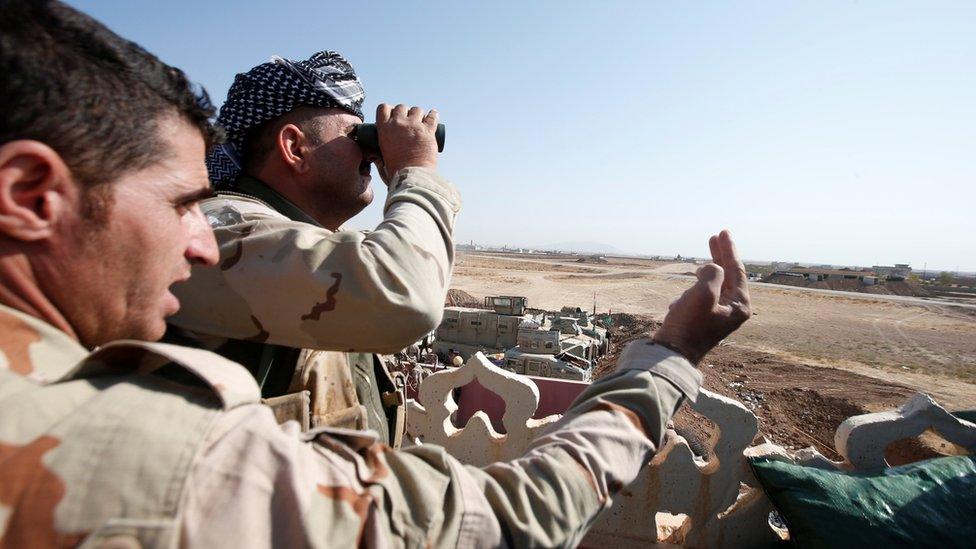
Kurdish Peshmerga fighters have been instructed not to advance into Mosul itself
After six days of fighting the Kurds dug in on a new fortified front line as CTS and Iraqi Army units passed through to continue the offensive north-east and east of Mosul.
To the north-east of Mosul, the Iraqi Army's 16th division and Turkish-supported forces loyal to former Nineveh Governor Atheel al-Nujaifi have gained around 6km (4 miles), with 9km (6 miles) still to go to Mosul's northern outskirts.
The most successful axis east of the Tigris was the CTS attack along the main road from Irbil to Mosul.
Special forces recaptured 15km (9 miles) of the road and penetrated the eastern edges of the city.
The BBC's Ian Pannell is with Iraq's special forces as they enter Mosul
The bridges in the centre of Mosul are around 7.5km (5 miles) away from the nearest liberated areas.
Now the ninth division forces are diverting north to join the CTS forces along Mosul's eastern flank, abandoning the stalled south-eastern axis for the time being.
Evolving plan
Two weeks into the offensive, there are reasons for guarded optimism.
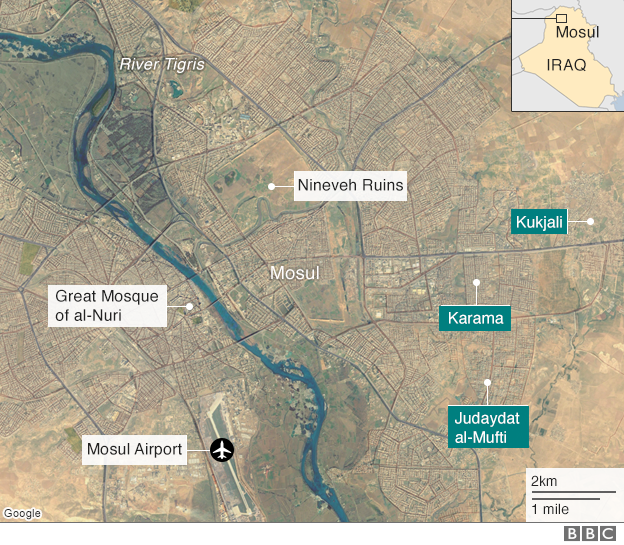
Co-operation between the Peshmerga and the ISF has been effective and enthusiastic, surprising both sides.
IS resistance has been strong - around 100 car bombs have targeted Iraqi forces - but the attacking momentum of the security forces has not been reduced.
The original six-axis attack is becoming rationalised down into three main thrusts: along the Mosul-Baghdad motorway west of the Tigris; along the Mosul-Irbil road into the east of the city; and the slow-moving north-eastern attack by the 16th division.
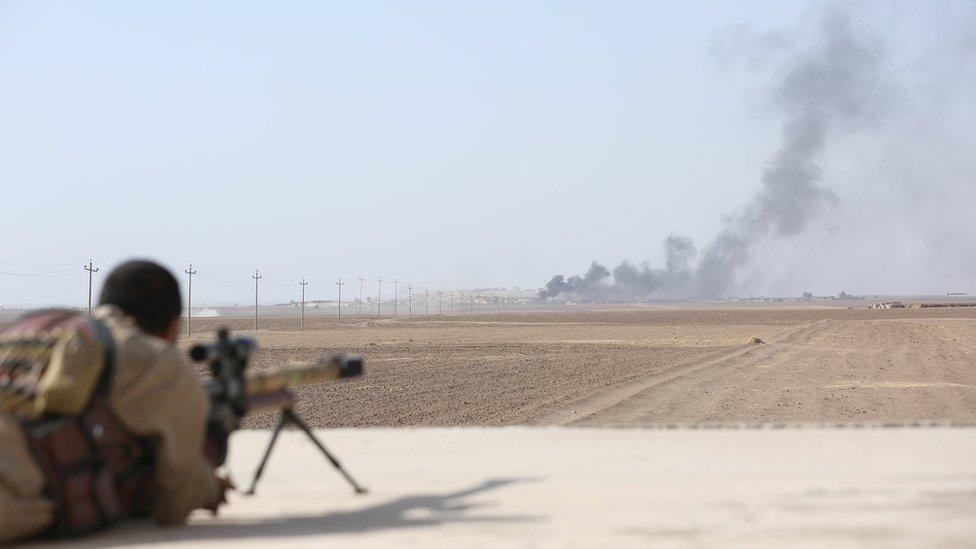
Advancing troops are facing tough resistance from IS fighters
This may ease some of the problems that were evident in the first two weeks of the offensive, such as over-stretch of US-led coalition airpower along so many different axes.
A final addition to the plan has emerged in the shape of a new axis pushing into the deserts west of Mosul, led by the Hashd al-Shaabi (Popular Mobilisation).
Its mainly Shia volunteer paramilitary units are formally part of the ISF but include groups designated by the US as terrorist organisations, like Kataib Hezbollah.
These lightly-armed, truck-mounted units are quickly filling up the open desert areas between Mosul and the Syrian border, penetrating around 15km (9 miles) into the desert and overrunning some of Islamic State's most notorious desert hideouts such as Jurn, Amrini, and Mustaniq.

Shia-led Hashd al-Shaabi units are moving towards Tal Afar, west of Mosul
The Hashd al-Shaabi units may contribute materially to the Mosul operation if they close the gap and stop short of Tal Afar, the small city west of Mosul, which is an IS stronghold.
But if they make an early stab at Tal Afar itself, this could send refugees flowing towards Mosul with tales of Shia militias on the warpath, alarming Mosul's own Sunni majority and possibly drawing in Turkish military intervention as threatened by Turkish President Recep Tayyip Erdogan.
Dr Michael Knights is the Lafer Fellow at the Washington Institute for Near East Policy. He has worked in all of Iraq's provinces, and spent time embedded with the Iraqi security forces. His recent report, external on the Iraqi security forces is available via the Washington Institute website. Follow him on Twitter, external